
The Second Seminole War, also known as the Florida War, was a conflict from 1835 to 1842 in Florida between the United States and groups collectively known as Seminoles, consisting of Native Americans and Black Indians. It was part of a series of conflicts called the Seminole Wars. The Second Seminole War, often referred to as the Seminole War, is regarded as "the longest and most costly of the Indian conflicts of the United States". After the Treaty of Payne's Landing in 1832 that called for the Seminole's removal from Florida, tensions rose until open hostilities started with Dade battle. For the next four years, the Seminole and the U.S. forces engaged in small engagements and by 1842 only a few hundred native peoples remained in Florida. The war was declared over on August 14, 1842.

Edward Walter Eberle was an admiral in the United States Navy, who served as Superintendent of the United States Naval Academy and the third Chief of Naval Operations.
Edmund Ross Colhoun was a rear admiral of the United States Navy who served during the Mexican War and the American Civil War, in which he was commended for his participation in the bombardment and capture of Fort Fisher.

Rear Admiral Christopher Raymond Perry Rodgers was an officer in the United States Navy. He served in the Mexican–American War, the American Civil War, as superintendent of the Naval Academy, president of the United States Naval Institute, and commander-in-chief of the Pacific Squadron.

Fort Dallas was a military base during the Seminole Wars on the banks of the Miami River in what is now Downtown Miami, Florida, United States.

John Harris was the sixth Commandant of the Marine Corps. He served in the Marine Corps for over 50 years, attaining the rank of colonel.

Fort Foster is a Second Seminole War era fort in central Florida, located 9 miles (14 km) south of current-day Zephyrhills in Pasco County.

Harry Handly Caldwell was America's first submarine captain. He became the first naval submarine commanding officer, of any nation, when he assumed command of USS Holland (SS-1) on October 12, 1900.
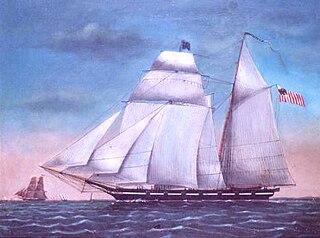
The United States Revenue Cutter Washington, named for Founding Father and the first U.S. president George Washington, was one of the 13 cutters of the Morris-Taney class. These cutters were the backbone of the United States Revenue Cutter Service for more than a decade. Samuel Humphreys designed these cutters for roles as diverse as fighting pirates, privateers, combating smugglers and operating with naval forces. He designed the vessels on a naval schooner concept. They had Baltimore Clipper lines. The vessels built by Webb and Allen, designed by Isaac Webb, resembled Humphreys' but had one less port.
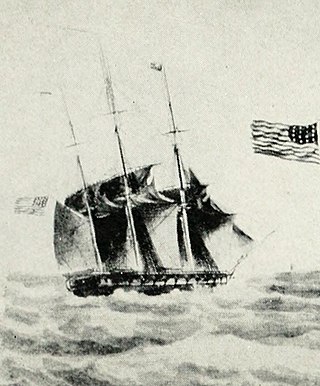
USS Concord was a wooden-hulled, three-masted sloop-of-war of the United States Navy, launched on 24 September 1828 from the Portsmouth Naval Shipyard in Kittery, Maine. She was the first US Navy vessel to bear the name 'Concord' and was so named after the town of Concord for its role at the beginning of the American Revolution. The vessel had a tonnage of 700. The Concord had a complement of 190 officers and seamen with an armament of 20 guns and saw service protecting American merchant ships and other interests in several places around the world. The ship and her crew, who also functioned as Marines, fought in the Seminole Wars in Florida. Concord ran aground while on a patrolling mission along the African coast. Despite determined efforts from the crew, with three losing their lives in the process, the Concord was unable to be refloated. It was the first ship christened by a woman. Sloop-of-war Concord, launched in 1828, was "christened by a young lady of Portsmouth." This is the first known instance of a woman sponsoring a United States Navy vessel. Unfortunately, the contemporary account does not name this pioneer female sponsor.
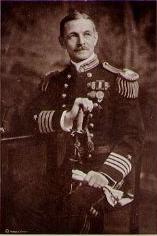
Rear Admiral Spencer Shepard Wood was a United States Navy officer. His career included service in the Spanish–American War and World War I, command of battleships and cruisers, and duty as an aide to a number of senior naval leaders.

Rear Admiral Joseph Salathiel Skerrett was an officer in the United States Navy. He participated in one of the most successful actions of the African Slave Trade Patrol, fought in the American Civil War, twice played a prominent role in the history of the Kingdom of Hawaii, and served as commander of the Pacific and Asiatic Squadrons. He had the reputation of being the best navigator in the U.S. Navy in his day.

Rear Admiral Frederick W. Rodgers was an officer in the United States Navy. He fought in the American Civil War and rose to be the last commander of the Asiatic Squadron. He was a grandson of U.S. Navy Commodore Matthew C. Perry.

Captain Robert F. R. Lewis was an officer in the United States Navy. He participated in the Paraguay Expedition, fought in the Mexican War and American Civil War, and served briefly as commander of the Asiatic Squadron.
Rear Admiral Andrew Bryson was an officer in the United States Navy. He fought in the American Civil War and served as commander of the South Atlantic Squadron.
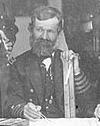
Rear Admiral George H. Cooper was an officer in the United States Navy. During his long naval career, he served on the African Slave Trade Patrol, and fought in the Second Seminole War, the Mexican War, the American Civil War, and the Korean Expedition, and rose to command of the North Atlantic Squadron.
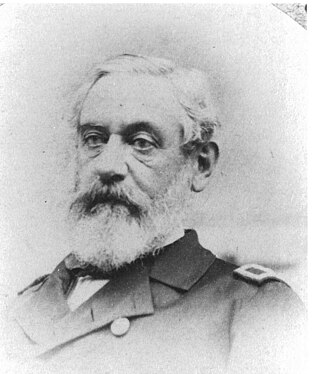
Gustavus Hall Scott was an officer in the United States Navy who served in the Second Seminole War and the American Civil War. He rose to the rank of rear admiral and late in his career was commander-in-chief of the North Atlantic Squadron.
The Washington Naval Militia is the currently inactive naval militia of the state of Washington. The Washington Naval Militia was organized as a naval reserve, serving as the naval parallel to the Washington National Guard.
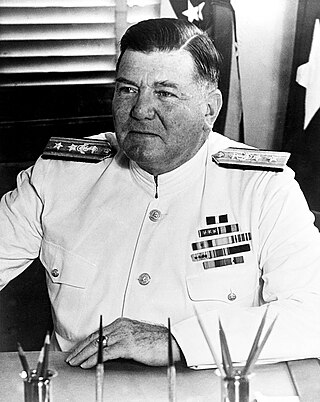
John Franklin Shafroth Jr. was a highly decorated officer in the United States Navy with the rank of Vice Admiral. He distinguished himself as Commander of destroyer USS Terry during World War I and received the Navy Cross, the United States Navy second-highest decoration awarded for valor in combat.
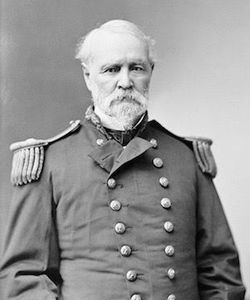
Levin Mynn Powell was a rear admiral of the United States Navy. He was known for his service in the Second Seminole War and developing riverine warfare techniques to fight the Seminole. He also served with the Union Navy in the American Civil War.


















